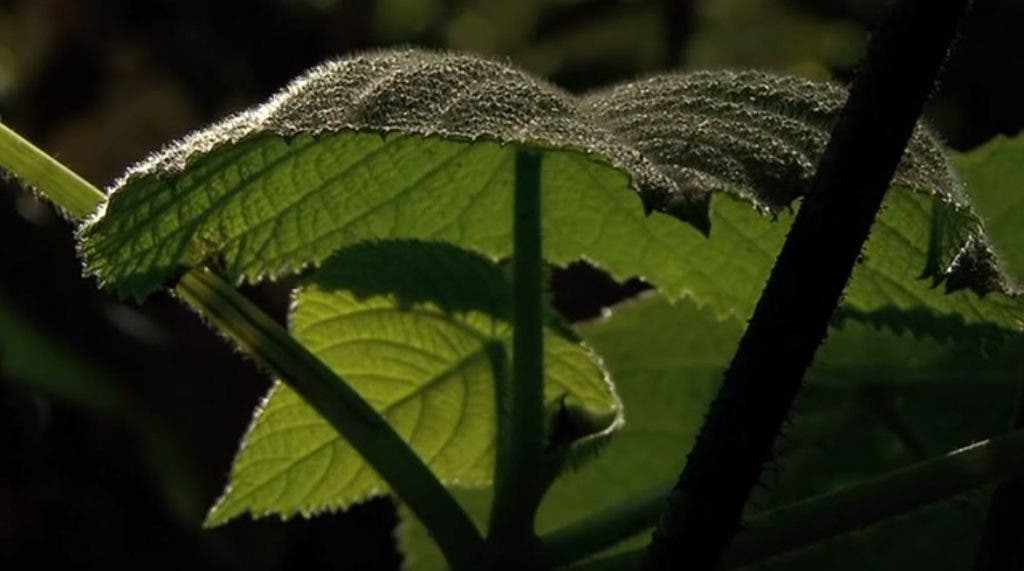
From afar, the leaves of the gympie-gympie (Dendrocnide moroides) look inconspicuous and even inviting judging from their soft and fuzzy appearance. But nothing could be further from the truth. This is one of the world’s most poisonous plants. A slight brush with its leaves is enough to deliver unimaginable pain that has been described as “like being burnt with hot acid and electrocuted at the same time.” To make matters worse, it can take months or, in some cases, even years before the pain completely goes away. Some have even killed themselves, finding the pain unbearable.
What is the gympie-gympie stinging tree?
The stinging bush, a member of the nettle family (Urticaceae), gets its name after the Australian town of Gympie, a gold mining hub settled in the 1860s. It’s native to the rainforests of northeast Australia and is also found in parts of Indonesia. You can find it in the rainforest clearings, as well as along creek lines and tracks.
These shrubs can grow to three meters in height with heart-shaped, serrated-edged, dark-green leaves that can grow from the size of a thumbnail to over 50 cm wide.
The gympie-gympie is one of four species of stinging tree or brush in Australia, all part of the nettle family, though the gympie-gympie is by far the most painful.
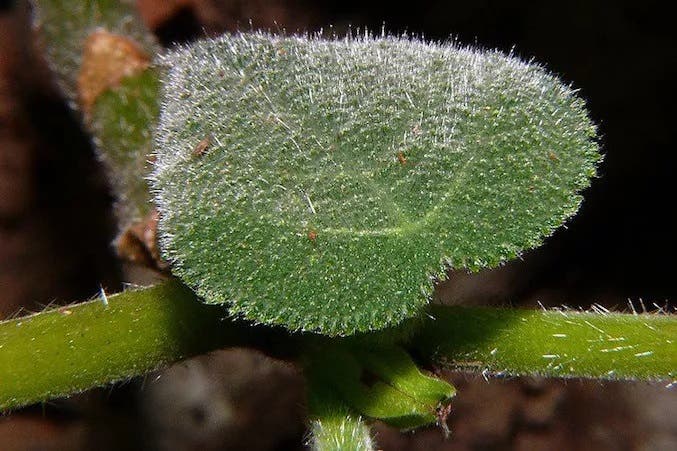
The notoriously painful toxin is delivered through tiny hairy filaments that cover the plant’s stems, leaves, and appetizing-looking fruits. The tip of filament has a small bulb containing the neurotoxin, which is easily broken off and sticks into the skin.

Tales of the gympie-gympie’s painful sting
The pain caused by the sting is legendary. A.C. Macmillan, a North Queensland road surveyor, reported to his boss in 1866 an encounter with a gympie-gympie that stung his packhorse. The horse “got mad, and died within two hours.” Local folklore is abundant in tales of horses jumping off cliffs due to the sheer agony or forestry workers drinking themselves to sleep to dull the horrendous pain.
Cyril Bromley, an Australian ex-serviceman, described his own encounter with the stinging tree during military training in World War II. Bromley spent three weeks in the hospital where he went through countless unsuccessful treatments. This entire time, the veteran was turned “mad as a cut snake” by the pain. But at least he lived to tell the tale. Bromley knew an officer who shot himself after an uninspired decision to use the gympie-gympie as toilet paper.
Speaking to Australian Geographic, Ernie Rider recounted one unforgettable day in 1963 when he was slapped in the face, arms, and chest by a stinging tree.
“I remember it feeling like there were giant hands trying to squash my chest,” he said. “For two or three days the pain was almost unbearable; I couldn’t work or sleep, then it was pretty bad pain for another fortnight or so. The stinging persisted for two years and recurred every time I had a cold shower.”
“There’s nothing to rival it; it’s 10 times worse than anything else – scrub ticks, scrub itch and itchy-jack sting included. Stinging trees are a real and present danger.”
Marina Hurley, currently a Visiting Fellow at the University of New South Wales, is one of the world’s foremost experts in stinging trees. In 1989, Marina’s passion for the rainforest led her to bury herself in the undergrowth of the rainforests of the Atherton Tablelands in North Queensland for three years where she performed fieldwork on stinging trees. It didn’t take long during this fieldwork before she got stung, an experience which she described in an article as “the worst kind of pain you can imagine.”
Immediately after a person is stung, a burning pain is felt. However, that’s just an appetizer since peak pain is reached after 20 to 30 minutes.
Although the pain is staggering, the most damning thing about this poisonous shrub is the fact that the toxic hairs can remain in the skin for up to six months. During this time, if the skin is pressed hard or washed with hot or cold water, the stings resurface. Good luck taking a shower.
“Not only do you feel pain from where you are stung, if it is a really bad sting, within about 20 minutes your lymph nodes under your arms swell and throb painfully and feel like they are being slammed between two blocks of wood,” Hurley wrote.
“The intense throbbing pain from both the sting and from your lymph nodes can last anywhere from 1-4 hours, depending upon what species you touched, the amount of skin that was stung, and how hard you came into contact with the plant.”
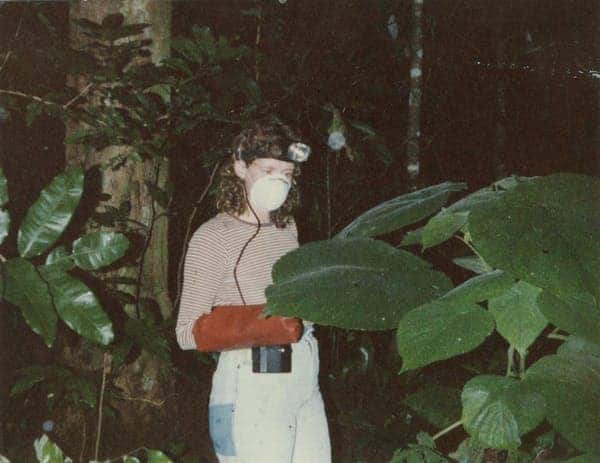
According to Hurley, who studied Dendrocnide plants for years, the structure and function of their stinging hairs is similar to a hypodermic needle. But despite quite a lot of research, Hurley and colleagues have yet to figure out the exact composition of the shrub’s neurotoxin.
What we know for sure is that the toxin is very chemically stable and heat resistant. This means that dried botanical specimens gathering dust in some museum collection from 100 years ago are still dangerous and can sting you.
Even if you aren’t in direct contact with the shrub’s leaves or stems, you can still get badly stung if you are in their vicinity without protection (i.e. gloves and face mask) since the tiny hairs are airborne and can be inhaled. This can cause runny nose, nasal bleeding, and throat irritation.
Some animals actually eat them
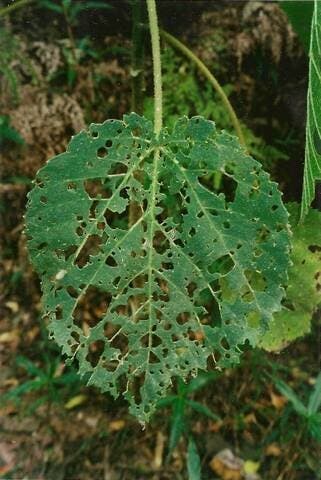
Hurley originally embarked on her research in the late 80s and early 90s after she noticed some chewed Dendrocnide leaves. How is it possible that animals could eat such a painfully toxic plant?
Eventually, she found the culprits: a nocturnal leaf-eating chrysomelid beetle and many other leaf-chewing insects and sap-suckers, as well as small marsupials known as red-legged pademelons.
It’s not clear how these animals can devour the poisonous plant without getting stung or suffering an allergic reaction. Perhaps future research might uncover some biological pathways that may lead to an effective treatment.
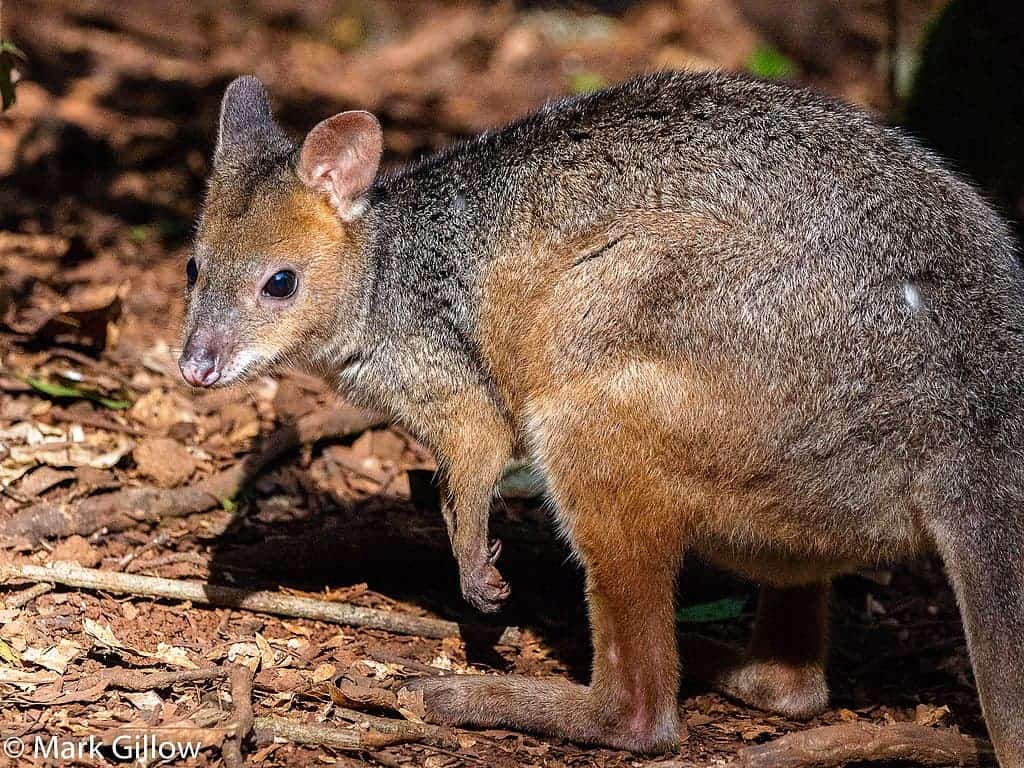
At the moment, there is no antidote for a gympie sting. Doctors advise victims not to rub the stung area since this can break the hairs even more causing them to spread further in the skin. Pouring a 1:10 solution of diluted hydrochloric acid over the sting can also help a bit with the pain. However, people will experience excruciating pain no matter what. For some people working as surveyors, forest rangers, and timber workers in Australia, the gympie is a serious occupational hazard.
It’s such a pesky plant that in 1968 a British biowarfare lab in the UK sent a team to Australia to collect specimens of stinging trees to ascertain their usefulness as a biological weapon. Fortunately, no such ghastly weapon was ever developed by the military interest itself serves as a testament to the gympie’s savageness.


